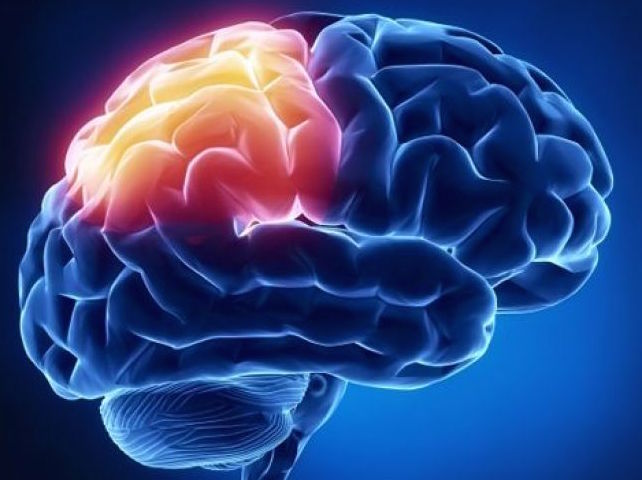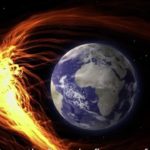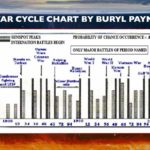Geomagnetic Storms may Influence Risk of Stroke
More strokes happen when geomagnetic storms are afoot, according to a new review of stroke literature – although it’s not clear what protective measures anyone could take, researchers said.
Geomagnetic storms happen when the Earth’s magnetic field is disturbed by solar winds or coronal mass ejections, which throw out powerful magnetic fields from the sun.
Among more than 11,000 people who had a stroke, the event was almost 20 percent more likely to happen on days with geomagnetic storms, researchers in New Zealand found.
“The results were a big surprise to us,” said lead author Dr. Valery L. Feigin of the National Institute for Stroke and Applied Neurosciences at the School of Rehabilitation and Occupation Studies at Auckland University of Technology.
“What we were particularly surprised with was the size and consistency of the effect of geomagnetic storms on the risk of stroke occurrence, suggesting that geomagnetic storms are significant risk factors for stroke,” Feigin told Reuters Health by email.
The storms can last hours to days, and when strong enough can disrupt satellites and push the aurora borealis much further south than usual, as happened this winter over the United Kingdom.
The electromagnetic upheaval also makes magnetic compasses behave erratically and in 1989, a geomagnetic storm disrupted the Quebec power grid, causing a blackout in the province that lasted nine hours.
Researchers aren’t sure, however, why the storms would be linked to stroke risk.
The review cites six large stroke studies including a total of more than 11,000 patients that took place between 1981 and 2004 in Europe, Australia and New Zealand.
Feigin and his colleagues considered the dates of each participant’s first stroke alongside a record of geomagnetic activity from the same time period from the U.S. National Oceanic and Atmospheric Administration.
For each incident of stroke, researchers compared geomagnetic activity that day with activity on eight other days when the patient did not have a stroke.
According to their results, which are published in the journal Stroke, geomagnetic storms were 19 percent more likely to occur on geomagnetic storm days than on other days.
That is a fairly significant increase in risk, Feigin said, comparing it to the stroke risk associated with taking hormone replacement therapy.
On average, people suffered strokes around age 70, but the connection to geomagnetic storms was stronger for people under age 65.
Over the course of the study, geomagnetic activity didn’t change much from year to year, but it was calmest from 1996 to 1998, which was the period of solar minima in the sun’s 11-year activity cycle, when solar flares and sunspots are least common.
Feigin pointed out that 2014 is a “solar maximum” year.
“There is preliminary evidence suggesting effects of geomagnetic storms on blood pressure increase, variations of heart rhythm and blood clotting abilities, all of which are known risk factors for stroke,” Feigin said, although that’s mostly conjecture at this point.
Earth’s magnetic field differs depending on where you are on the planet, but geomagnetic storms influence the whole magnetic field, and based on this review they seem to affect stroke risk in Europe and Australasia in the same way, he said.
“It’s a fascinating idea, at least on that level,” said Dr. James Brorson, an expert in the evaluation and treatment of stroke in the University of Chicago department of neurology. “I wasn’t aware that this was even postulated.”
A 19 percent increase in stroke risk is enough to make one sit up and take notice, but not as large as the risk increase due to smoking or high blood pressure, he said.
“The idea that geomagnetic storms influence whether or not we have a stroke almost seems like magical thinking,” he said, and it’s certainly too early for people to change their behavior based on the storms.
“Any patient of mine, I would counsel them to by no means worry about this,” Brorson told Reuters Health by phone. “It remains to be seen whether this holds up.”
Besides, he said, geomagnetic storms are not usually very predictable, and even if they were, there’s really nothing anyone can do to avoid them. The Earth’s magnetic field is everywhere, indoors and out.
Although the authors of the review suggest that people at risk for stroke could take extra precautions in magnetically turbulent times, like avoiding stress, excessive alcohol and dehydration, those are measures people should be taking all the time anyway, Brorson said.
“I don’t think that there’s practical significance now, but it’s very fascinating,” he said.
SOURCE: bit.ly/1o5dSnu Stroke, online April 22, 2014.





